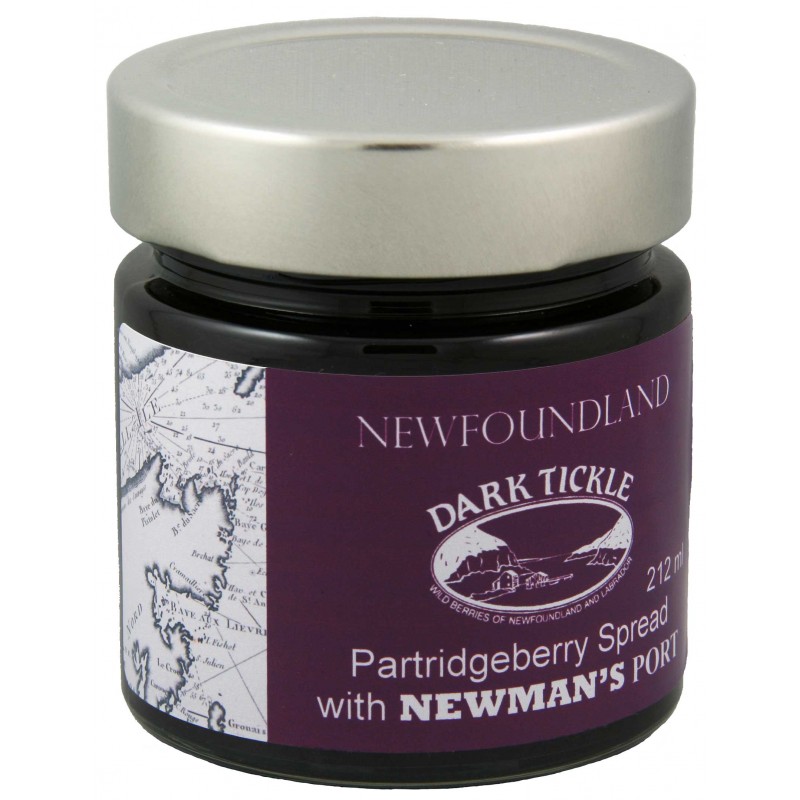






Partridgeberry spread with Newman's Port! Tart, exceptional in taste, and known for their medicinal qualities, partridgeberries have been a staple of northern peoples for centuries.
Partridgeberry (Vaccinium vitis-idaea). Internationally known as the lingonberry this relative of the cranberry family is a low mat forming evergreen shrub with tiny rounded leaves. These berries grow in the dry, acidic soils of Newfoundland and Labrador's barrens and coastal headlands. Their twin flowers have a pinkish hue in bud then turn white as they bloom in mid-June to mid-July. The flower ovaries gives rise to a single dark red berry ripening through September's frost. Tart in flavour they are high in vitamin C, tannin, anthocyanin, and antioxidants.
The origins of the practice of aging Newman's Port in Newfoundland dates back to 1679. According to tradition, in the fall of 1679 a Portuguese vessel loaded with port wine bound for London slipped its moorings. As it floated out to sea it encountered French privateers. The privateers drove the ship further off course and, in attempts to escape, it ventured out into the Atlantic. After weathering severe Atlantic storms, the captain decided to head for St. John's, where the ship stayed for the winter months. The cargo of port wine was safely stored in caves in the Southside Hills of St. John's.
The following spring the vessel finally completed its long, arduous journey to England. It was soon discovered that the port that had over-wintered in Newfoundland had acquired a bouquet, a smoothness and a flavour that it did not have before. From that point on, Newman and Company decided to age its port wine in Newfoundland. The practice continued at the wine vaults on Water Street from the early nineteenth century onwards. The wine was aged in the vaults by the Newman's until at least 1893, possibly until 1914.
© 2003 Heritage Foundation of Newfoundland and Labrador